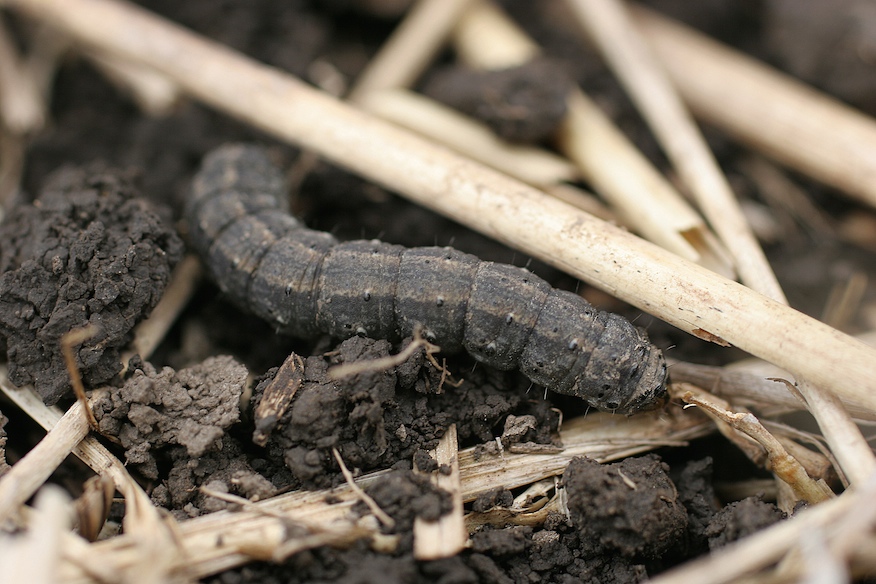Bryan Jensen, UW Dept. of Entomology and IPM Program
Results from DATCP’s Black Cutworm Pheromone Trap Network has indicated several significant flights of black cutworm adults around the state. Other midwestern states have also reported significant catches. These traps are a great early warning tool but not always a good predictor of field damage. The closer we can get to monitoring the lifestage which causes crop damage is when our field-specific accuracy really picks up. Well, the larval stage is here and cutting is likely in the near future.
Corn is most susceptible to black cutworm damage between emergence and V4. Field scenarios most attractive for egg laying include corn planted into soybean stubble, presence of low growing broadleaf weeds and low/wet areas of corn fields. Using this information can help direct your early season field monitoring to areas where damage is most likely to occur. However, it is not a foolproof scheme. Nothing is.
Cutworms will damage corn in a few different ways and those symptoms will be dependent on cutworm size and crop stage. Small cutworms regardless of corn stage can only chew holes in the leaves. Although this damage is not economically damaging, it is a sign of more severe damage yet to come. Large larvae and small corn (up to approx. V2) can cut corn plants at, or slightly below, ground level. It is this symptom that we usually identify with black cutworm. However, large larvae on V3-V4 corn will usually burrow into the plant below ground level and feed at the growing point. Above ground symptoms are commonly called “dead-heart” or “wilted whorl”. These latter symptoms are shared with other early season corn pests such as wireworms, white grubs, sandhill cutworms and a little later in the year with stalk borer and hop vine borer.
The economic threshold for black cutworms is roughly around 3-5% damaged plants. If most of the larvae are < ¾ long, you have more preventable yield loss and I would use the lower end of the threshold. If my cutworm population is > ¾ inch long, I would consider spraying if I found closer to 5% damaged plants. If most larvae are greater than 1 ¼ I would consider not spraying because these larvae will be pupating soon and will no longer damage corn. To find larvae, slowly excavate around the base of damaged plants. Small larvae blend well with most soil types.
It can be tempting to preventatively tank mix an insecticide with a preemergence herbicide because of high trap catches. However, using adult catches does not translate well to field specific damage and, furthermore, the best treatment window rarely matches for both insects and herbicides.
Also, beware of any possible herbicide/insecticide interactions by check labels before application.
You can view a brief video on the subject here >>>


